Birders in action.
As the coyote peers down at us from its rocky hideout, it probably wonders what the hell we are doing, staring at it through binoculars. In fact, all the drivers in their large roaring pickups along Alderpoint Road probably have the same question on their mind because to the average person birders look like strange, out-of-place figures pointing at the horizon, busting out their large optical scopes, and cupping their ears.
LoCO Sunday Magazine
- NIKKI’S NATURE RAMBLE: The Other World of Alderpoint
- GROWING OLD UNGRACEFULLY: Back Into the (GMO) Fray
- DEAD RECKONING: Guilty Father, Guilty Son
- LETTER FROM ISTANBUL: The Massacre Orchestra
But amid the bullet-ridden highway signs and discarded whip-its is a world filled with the sweet babbles of Western Meadowlarks, the eye-popping colors of springtime wildflowers, and of course, the curious coyote. This world is what motivated us to get up at the crack of dawn this past Saturday to join the Audubon Society for their annual trip to Alderpoint.
The gravel road that leads down to the old train tracks where the Aududon Society hikes is a dump site for mattresses, liquor bottles, car batteries, even cars. In spite of junk everywhere and the overcast weather, the our attention is on the abundance of Golden Globelily (Calochortus amabilis) growing on the rocky hillsides, and anticipation is thick about what bird species we may find.
Birders like this area because the oak chaparral habitat provides a different niche of birds that can only be found in this part of the county. Another reason why this place is on the birding radar is that it receives the first of the tropical songbirds migrating back after their long journey south from wintering grounds. The sounds and colors of these species of migrants add a different spice to the repertoire of biological diversity of Humboldt.
There is one species especially sought after by birders who sign up for this on this trip: the Rufous-Crowned Sparrow (Aimophila ruficeps). Our group leader, Tony Kurz, who has led the trip for the past four years, says the only spot these secretive guys are found in Humboldt County is a forty-minute walk down the train tracks to a shrubby rocky area surrounding an old train trestle.
Except for one washout on the trail, which forces hikers to trek down a steep hill with Poison Oak (Toxicodenron diversilobum) and then climb back up, the decaying tracks are a relatively easy walk. We stop along the way to watch Silvery Blues (Glaucopsyche lygdamus) hover over colorful wildflowers, turn over rocks for salamanders, lizards, and scorpions, and to call out of hiding two mischievous Blue-Gray Gnatcatchers (Polioptila caerulea)for a better look through the binoculars.
Finally the we reach the trestle. The search is on to find this reclusive bird. Birding is 95 percent searching and 5 percent victory dance. The tension in the air is high, and everyone is on alert for the sparrow’s piercing staccato song or sudden movement from the bushes below. However, as time slips on it becomes clear that they have found a new hiding place. That’s just how it goes sometimes.
As we walk across the old train trestle, sounds of metal grating under foot and laughter fill the air as a chilly wind begins to pick up. A Peregrine Falcon (Falco peregrinus) catches a cold front and soars quietly behind us across the Eel River. After birding a little longer, we head for the car, tired after a long day of taking it all in.
Whether they had been here before or were new to the whole experience, all have enjoyed the secrets of Alderpoint in their own way. It’s a 21 mile drive back to civilization.
Western meadowlark.
Trip leader Tony Kurz showing off a young Western Fence Lizard.
An Angry Pacific Northwest Scorpion (Uroctonus mordax): Don’t try this at home!
The railroad trestle.
Adult Western Fence Lizard (Sceloporus occidentalis).
Tony Kurz holding a Foothill Yellow-Legged Frog (Rana boylii)
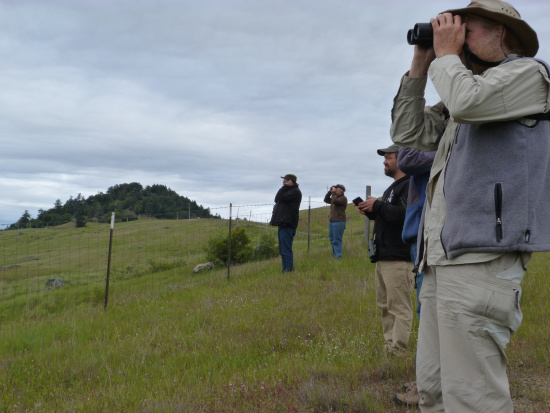
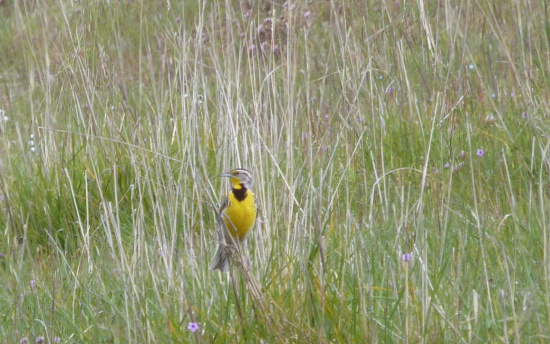
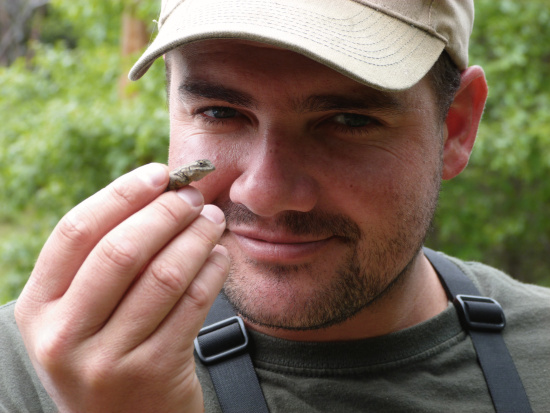
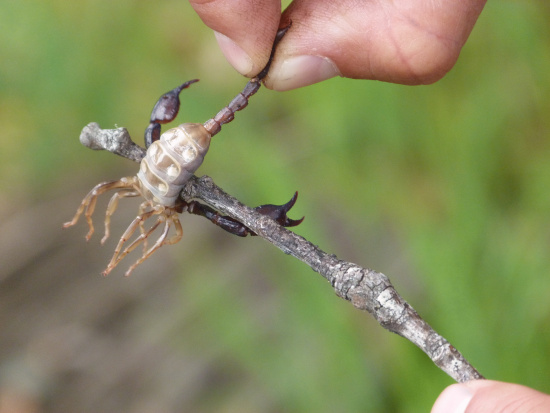


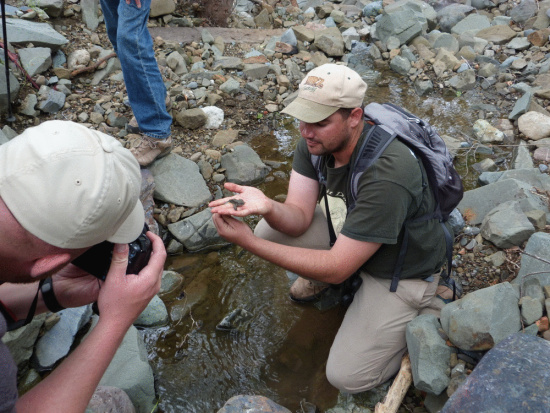
CLICK TO MANAGE